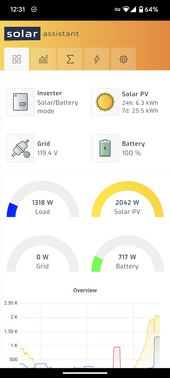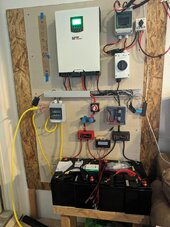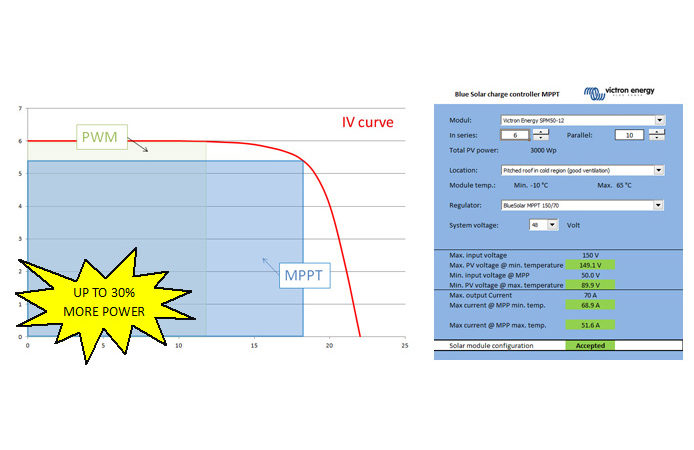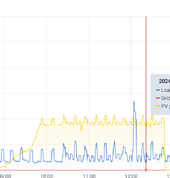Scoob-SanDiego
New Member
I recently purchased a MPP 2424LV-MSD
Lovely starter unit... Now I wish I had gotten a more capable EG4 3K LOL. Live and learn!
The unit has a restricted VOC of 150V. and operating voltage of 30-80V... limiting me to setting my (used) 240W Trina panels
in strings of 2 panels (about 60V output). I have a total of 4 regular strings for a total of 1920W max.
And I have an extra 4 panels (2 strings) that I can turn on/off with a separate DC isolator.
Works great to crank up the juice when the sun is not hot enough... but today with the extra panels my
PV input was around 1950W.
QUESTIONS:
I am thinking of creating a little RPI circuit to drive a DC relay that can read the output of my solarAssistant
through MQTT either with a python library or possibly using Node-Red.
A simple algorithm along the lines of: IF PV power < 1400 or 1500W, then turn on extra panels.
And if PV power exceeds 1900 (or 1950W), then disconnect extra panels.
I could easily increase the granularity of the booster panels by adding 2 DC relays and add a single string at a time.
Any input, suggestions, shared experience with going over the rated PV limit of the inverter is welcome!
- Christian
Lovely starter unit... Now I wish I had gotten a more capable EG4 3K LOL. Live and learn!
The unit has a restricted VOC of 150V. and operating voltage of 30-80V... limiting me to setting my (used) 240W Trina panels
in strings of 2 panels (about 60V output). I have a total of 4 regular strings for a total of 1920W max.
And I have an extra 4 panels (2 strings) that I can turn on/off with a separate DC isolator.
Works great to crank up the juice when the sun is not hot enough... but today with the extra panels my
PV input was around 1950W.
QUESTIONS:
- What happens if the PV input exceeds the 2000W maximum specification for that model?
- And by that, I mean exceeds by 100-200W and for short period (say, less than 5 minutes).
- Is the MPP unit protected from over input PV current or will it just smoke / get damaged / catch fire?
- Is it a hard 2000W input or is there some wiggle room for a short period (ex. up to 2200W for 4min)
I am thinking of creating a little RPI circuit to drive a DC relay that can read the output of my solarAssistant
through MQTT either with a python library or possibly using Node-Red.
- https://solar-assistant.io/help/integration/mqtt
- https://solar-assistant.io/help/integration/node-red
A simple algorithm along the lines of: IF PV power < 1400 or 1500W, then turn on extra panels.
And if PV power exceeds 1900 (or 1950W), then disconnect extra panels.
I could easily increase the granularity of the booster panels by adding 2 DC relays and add a single string at a time.
Any input, suggestions, shared experience with going over the rated PV limit of the inverter is welcome!
- Christian








